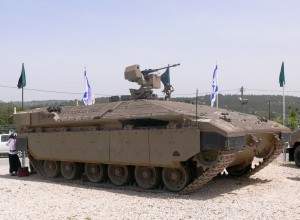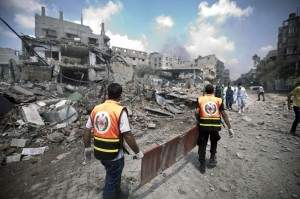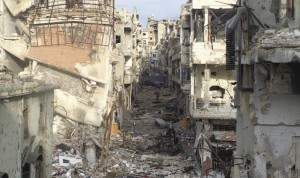The lie that Israel used too much artillery in Gaza
August 28, 2023 by Thomas Wictor
Yesterday Al Jazeera published a piece by Mark Perry titled “Why Israel’s Bombardment of Gaza Neighborhood Left US Officers ‘Stunned.'” It’s a dishonest hit piece that can be debunked with one sentence, but I’ll write a lot more. The lie that Israel used too much artillery in Gaza has been around for a while, so it’s time to show you that like every other charge thrown at the IDF in Operation Protective Edge, this one is also false.
From the article.
Though the Pentagon shies from publicly expressing judgments that might fall afoul of a decidedly pro-Israel Congress, senior U.S. military sources speaking on condition of anonymity offered scathing assessments of Israeli tactics, particularly in the Shujaiya neighborhood of Gaza City…
According to [a] senior U.S. officer, who had access to the July 21 Pentagon summary of the previous 24 hours of Israeli operations, the internal report showed that 11 Israeli artillery battalions — a minimum of 258 artillery pieces, according to the officer’s estimate — pumped at least 7,000 high explosive shells into the Gaza neighborhood, which included a barrage of some 4,800 shells during a seven-hour period at the height of the operation. Senior U.S. officers were stunned by the report.
As well they should be. It’s not true. Everything you just read is a lie. Everything.
First, there would be no reason for the Israelis to use eleven battalions of artillery on Shijaiyah. That number of 258 artillery pieces? It’s wrong. The Israelis use the M109 Howitzer, which they call the Doher.
Each Israeli M109 battalion consists of three batteries. One battery is made up of two platoons, and a platoon has three guns in it. Therefore each battalion has eighteen guns. The Al Jazeera article says a minimum of 258 guns were used. Eleven times eighteen is 198, which is only 77 percent of the figure Al Jazeera used. But even 198 howitzers is a complete fabrication.
Here’s a battery—two platoons—of Dohers positioned for firing.
Look how much space the six guns require between them. The Doher is ten feet (three meters) wide, so the guns are about fifty feet (fifteen meters) apart. That means a platoon of six would take up ten times six feet, plus fifty times five, a total of 310 feet (94 meters). If there were 198 Dohers, they would occupy a front of 61,380 feet, or eleven miles (18 km).
Being as generous as I can, I’ll give Shijaiyah a width of about two miles (3.2 km).
So the Israelis lined up Dohers along a front more than five times wider than the target area? And don’t forget, the IDF didn’t fire at all of Shijaiyah. Only a few select areas were damaged.
It’s a flat-out lie that the Israelis used eleven artillery battalions to fire at Shijaiyah.
And the figure of 7000 high-explosive shells is an exaggeration by more than a factor of ten. The IDF fired about 600 shells; you can see by the map above that virtually all of them hit their targets. Artillery was last-ditch effort to protect Israeli troops, who were facing a murderous counterattack by Hamas.
The Golani Brigade in Shejaia sustained heavy casualties, the source recalled, after Hamas intelligence units mapped out its location.
Operatives sent the information to waiting terrorists in tunnels. In a coordinated fashion, the gunmen emerged from “the metro under Shejaia,” the source said, referring to the tunnels, and launched a massive wave of antitank, mortar, sniper and automatic gunfire from buildings surrounding the Golani force.
“I saw that enemy cells had come to within 40 meters of our forces,” the source added.
At this stage, the Artillery Corps mapped out the location of enemy forces, in Gazan civilian residential buildings – areas where the IDF had previously told civilians to evacuate.
The Artillery Corps Support Unit watched the battle with alarm, and took drastic action, the source said.
“Otherwise, I knew we would be getting 600 body bags back.”
It instructed all of the Golani soldiers to enter their namer (“leopard”) armored personnel carrier, and launched a wave of shelling, some of which fell on the namers, which are built to withstand such strikes.
Three artillery battalions rained fire on Shejaia, in a bid to rescue the Golani soldiers. As this occurred, the source said, Hamas continued to blast the soldiers with mortars from all around the neighborhood.
“We heard them say over the radio: ‘Fire is coming down on us.’”
After 20 minutes of shelling, silence ensued.
“There were no more Hamas mortars, no more antitank missiles, no more automatic weapon fire,” the source said.
Ten buildings lay in ruins.
Look at that! THREE artillery battalions, not eleven. That means fifty-four guns, not the 258 that Al Jazeera reported. And they shelled for twenty minutes, not seven hours. Personally, I don’t think it was even three battalions. My guess is that it was three batteries, or eighteen guns. And ten buildings were demolished. Ten.
In comparison, during the Second Battle of Fallujah (November 7 to December 23, 2004, the US military fired 945 high-explosive 155mm shells from two M109 Howitzers, as well as 942 high-explosive rounds from 120mm mortars.
Something else to remember: The residents of Shijaiyah either refused to leave or were prevented from leaving by Hamas. Therefore the Israeli ground troops entered the most fortified, protected, hardened, well-defended strong point in Gaza without using artillery to prepare the battlefield. They did what I’ve called “reconnaissance by exposure.”
[IDF chief artillery officer Brig. Gen. Roy] Riftin adamantly disputed widespread perceptions that the IDF used disproportionate force in Gaza. On the contrary, he said improved Tzayad-enabled target acquisition capabilities allowed individual batteries to fire more selectively at assigned targets.
“Remember, Shuja’iya was supposed to be evacuated. Ditto Beit Hanoun. A normal army would firstly prepare the area well with saturation fire before allowing its forces to enter.
“But we first entered our forces, determined which areas were threatening them, and then implemented our fire,” Riftin said.
“It’s a different approach that comes at a cost of tremendous work and added risk to our people, but that’s what we did. No one can be more righteous than that.”
He’s absolutely correct. The IDF destroyed Hamas’s “center of gravity” while leaving the surrounding buildings untouched. You can see the apartments on the right still have glass in the windows.
The death toll in the neighborhood of 100,000 was 65, with 300 wounded. IDF losses were thirteen. They accomplished their goal in about seven hours.
It took the Americans seven weeks to wrest Fallujah from about 4000 terrorists who didn’t have tunnels or antitank guided missiles. More than 800 civilians were killed, and over 10,000 homes were destroyed. American losses were 95 killed and 560 wounded.
I support the American actions in Fallujah. But I reject this characterization from the lying Al Jazeera piece.
“Holy bejeezus,” exclaimed retired Lt. Gen. Robert Gard when told the numbers of artillery pieces and rounds fired during the July 21 action. “That rate of fire over that period of time is astonishing. If the figures are even half right, Israel’s response was absolutely disproportionate.”
Senior U.S. officers who are familiar with the battle and Israeli artillery operations, which are modeled on U.S. doctrine, assessed that, given that rate of artillery fire into Shujaiya, IDF commanders were not precisely targeting Palestinian military formations as much as laying down an indiscriminate barrage aimed at cratering the neighborhood.
“Listen, we know what it’s like to kill civilians in war,” said the senior U.S. officer. “Hell, we even put it on the front pages. We call it collateral damage. We absolutely try to minimize it, because we know it turns people against you. Killing civilians is a sure prescription for defeat. But that’s not what the IDF did in Shujaiya on July 21. Human shields? C’mon, just own up to it.”
Own up to a lie that someone tells about you? Why?
I have no problem calling my countrymen stupid. These bozos didn’t even do the slightest amount of research before they flapped their gums to AL JAZEERA! Despicable. Look at that IDF target map of Shijaiyah, senior US officials. There was no “cratering” tactic. You made fools of yourselves. Al Jazeera turned you into useful idiots.
Much was made of the fact that the Israelis fired over 34,000 artillery rounds during Operation Protective Edge. Well, half were smoke rounds, and of the remaining 17,000, some were high explosive, some were cluster munitions, and some were illumination.
Most had to be illumination rounds. If you just look at the photos of the destruction, you’ll see that there weren’t many high-explosive or cluster rounds fired. Again, fragmentation damage in Gaza is minimal. This is Syria, where they fire high-explosive ordnance at cities all day and night.
Where’s the fragmentation damage even in Shijaiyah?
Blast damage everywhere, but hardly any pockmarking or peppering. The buildings in the photo above were brought down with Hamas explosives that were either detonated deliberately by the terrorists or set off by Israeli aerial munitions or combat engineers. Those structures have been broken apart, not hit with fragments.
From September 2005, when the IDF withdrew from the Gaza Strip, through May 2007, Israel fired more than 14,600 artillery shells into the Gaza Strip, primarily in the north…
The IDF’s most common ammunition for these howitzers was a 155mm high-explosive artillery shell, usually the M107, [which] weighs about 44 kilograms and measures about 60.5 centimeters in length and 155 millimeters in diameter at its widest point. It has a range of up to 18 kilometers. If loaded with TNT, the shell spreads about 2,000 fragments in all directions.
Guess how many Palestinians the IDF killed with their more than 14,600 high-explosive shells?
Fifty-nine.
Of course Human Rights Watch says they were all civilians, because that’s what Hamas told them to say.
Everybody’s acting like they’re insane or retarded. The IDF doesn’t just close its eyes and fire. It has Hot Transmission, the Artillery Corps link to the Digital Army Program. Israeli artillerymen use unmanned aerial vehicles and sensors to see who they’re shooting at. Every infantry unit has forward observers, artillerymen embedded with the ground-pounders to direct fire. They use sophisticated target acquisition technology to calculate GPS coordinates that they send to the cannoneers.
It’s a science. Your gunners know what they’re doing. They’re not criminals, and anyone who says they are can go—
Well, I promised readers I wouldn’t use bad language, so I’ll just post this and shut up.
Update
I’ve learned that the regular army of the Israeli Defense Forces has four artillery brigades with two Doher battalions each. There are also eight reserve artillery brigades with two Doher battalions each. That makes for twenty-four Doher battalions.
The artillery brigade attached to the new 210th Regional Bashan Division on the Golan Heights didn’t join Operation Protective Edge, so two and a half reserve artillery brigades would’ve been needed to come up with Al Jazeera’s phony number of eleven artillery battalions.
Also, the Digital Army Program I mentioned earlier is a lot more advanced than I realized.
The system enables the user to designate a 12-digit target on the screen of a portable computer and then have the target engaged by diversified fire systems.
Another conceptual change that has come into effect recently is the implementation of the concept of Intelligence-Based Warfare by the infantry units of the IDF.
The new concept was developed by the IDF Intelligence Division in cooperation with the Ground Arm and based on the new cutting-edge C3 systems. According to this concept, tactical intelligence information is delivered for the benefit of field operations, all the way to the company and platoon commanders, using the Tzayad (Digital Ground Army) systems. The information is delivered to them continuously, even during actual combat.
The artillery is connected into Tzayad through Hot Transmission. Each shell therefore had a designated target.
That’s the final stake through the heart of the “indiscriminate fire” lie.
This article viewed 1414 times.









